Abstract
Monkeys could either postpone shock by pressing a lever or pull a chain to produce a period of time out from the avoidance procedure. The period of time out proved to be an effective positive reinforcer. Certain features of the animals' behavior were attributed to interactions between the two responses.
Full text
PDF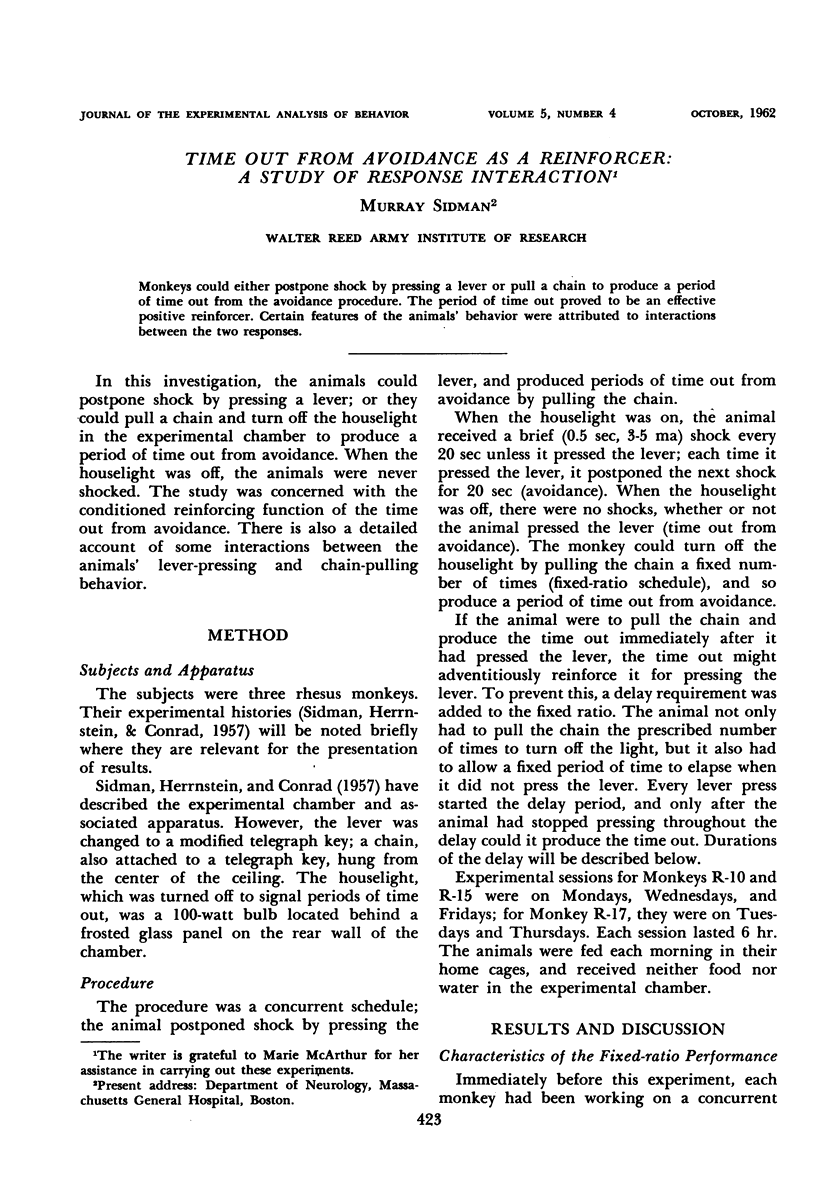
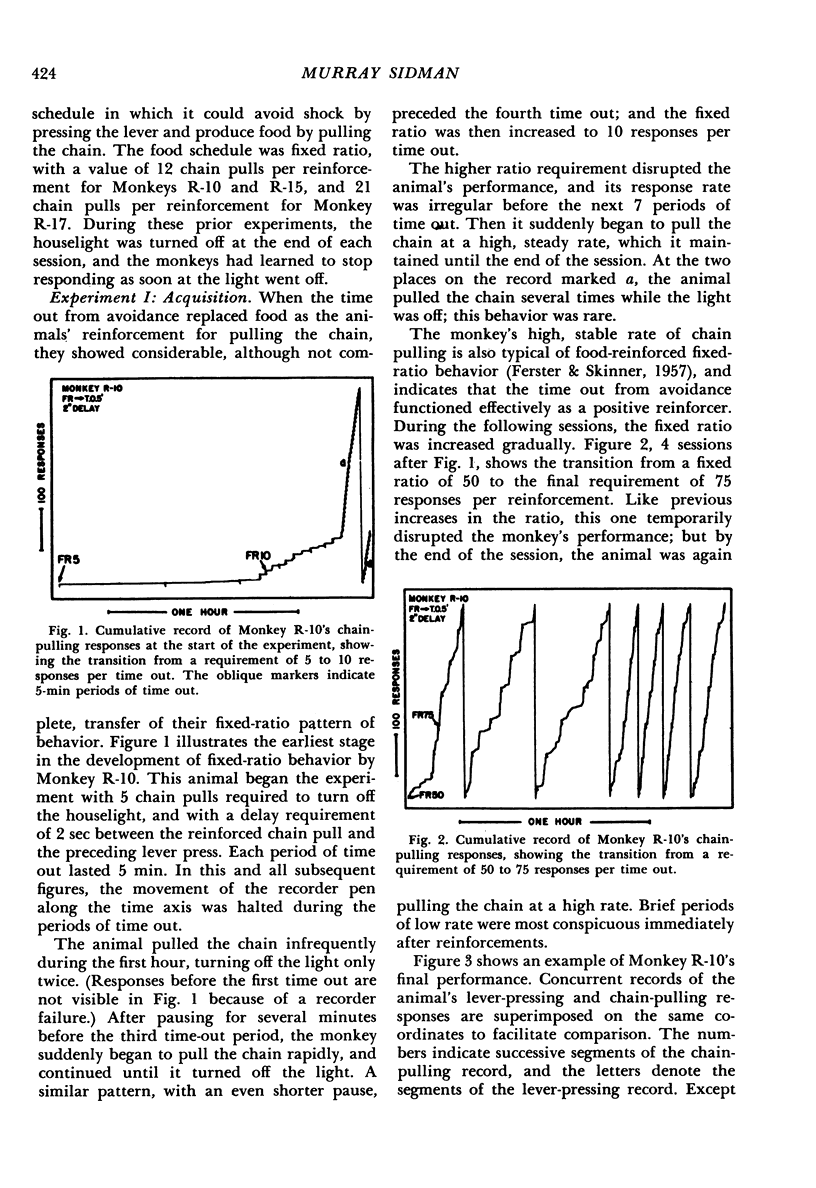
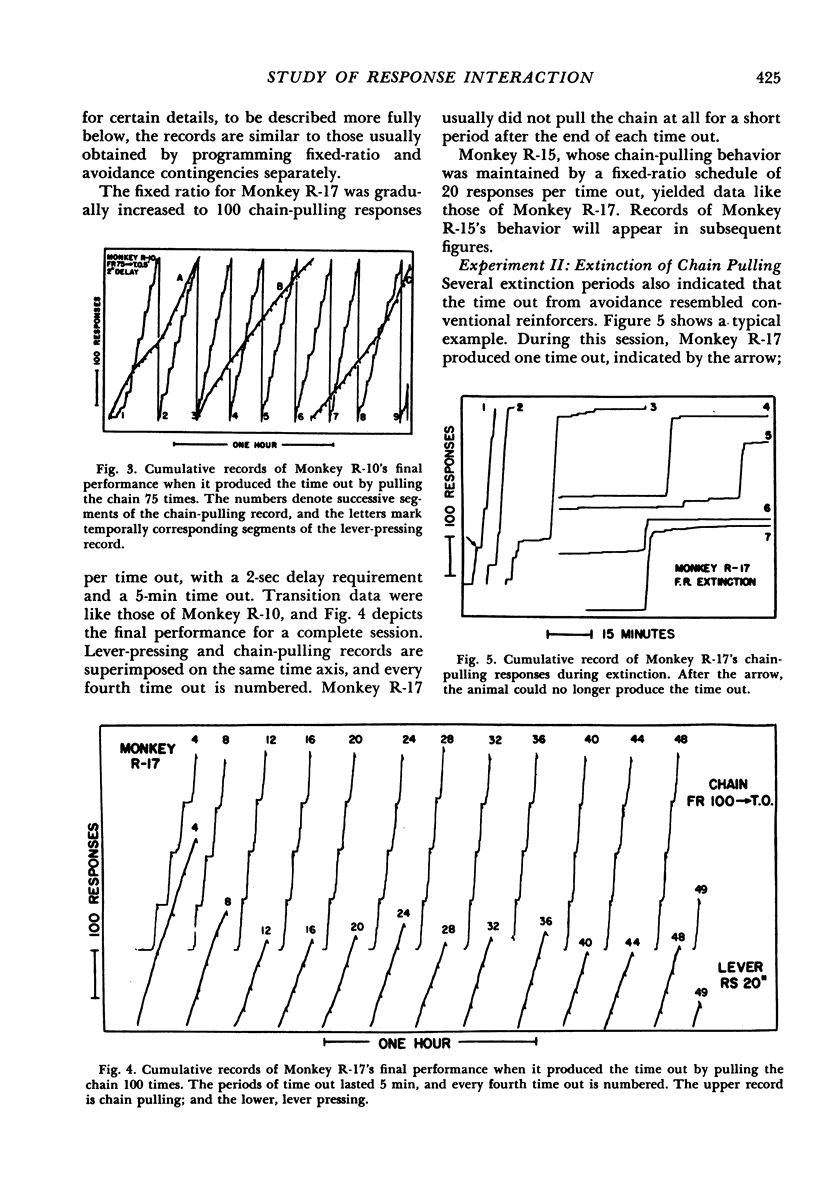
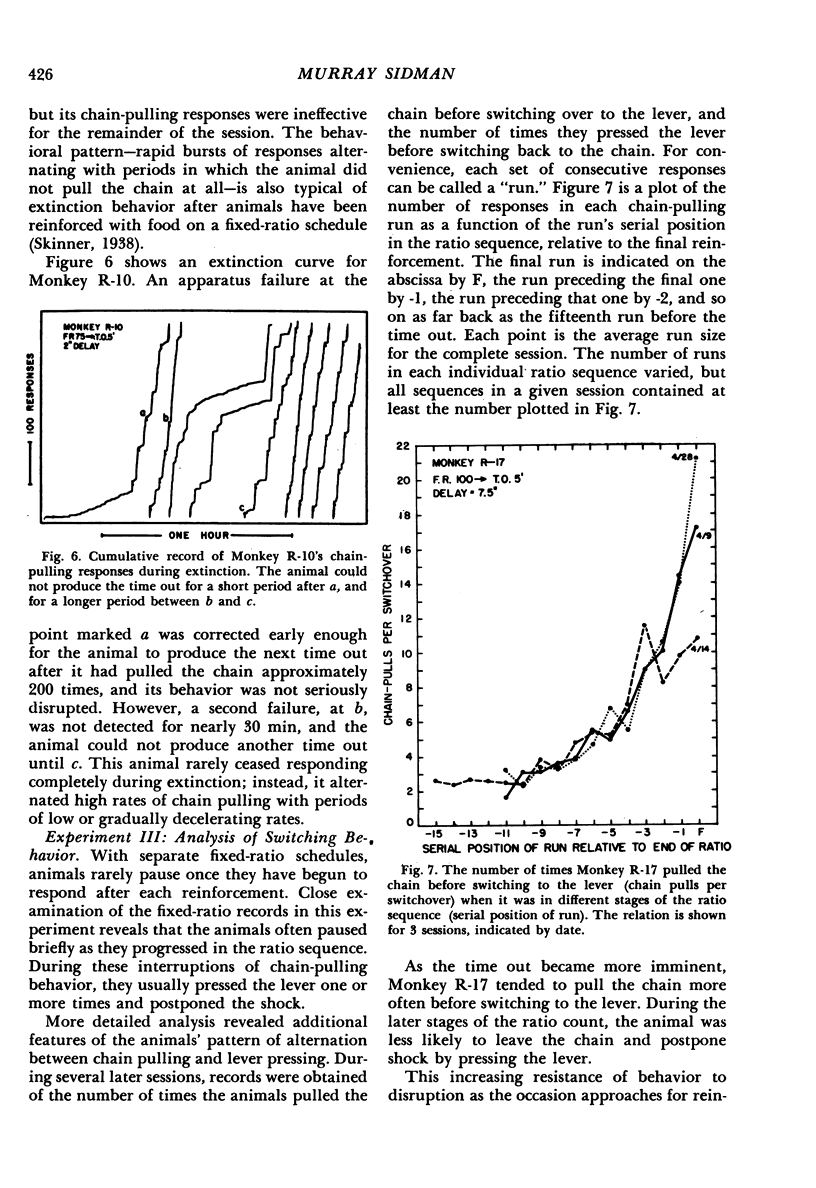
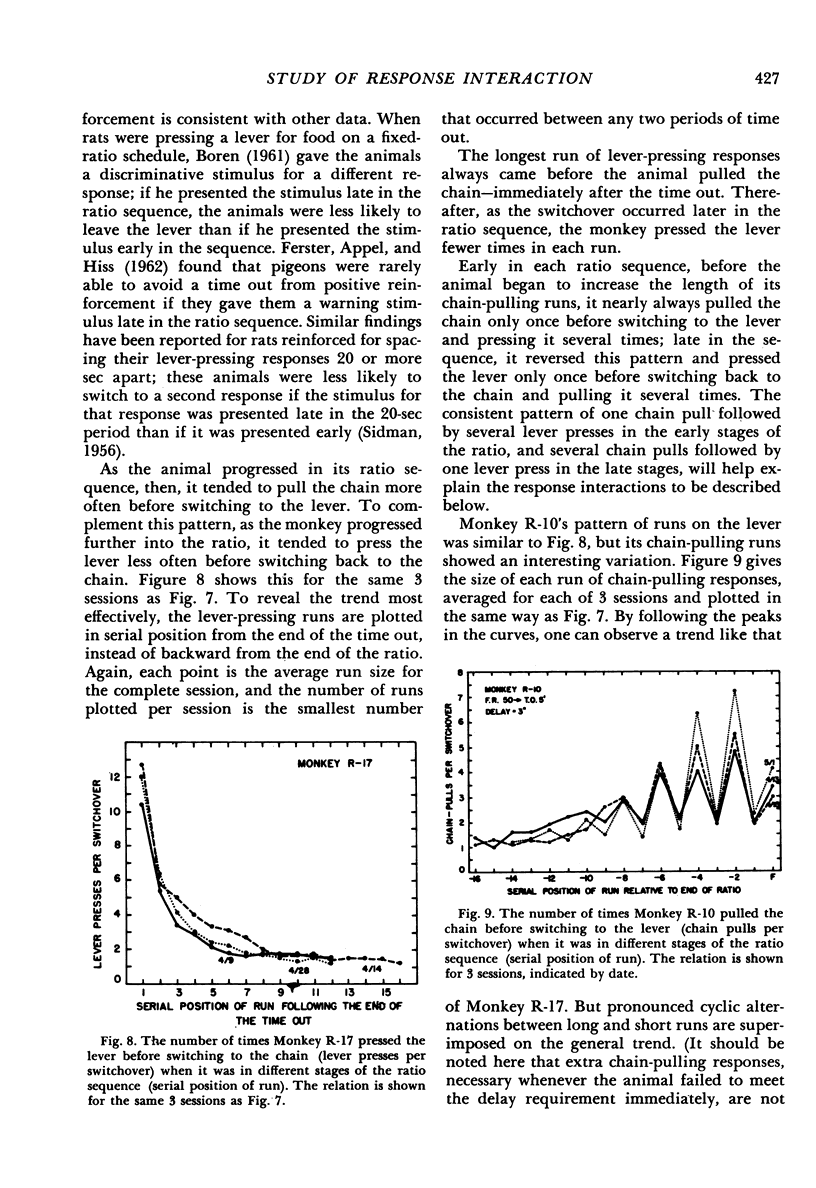

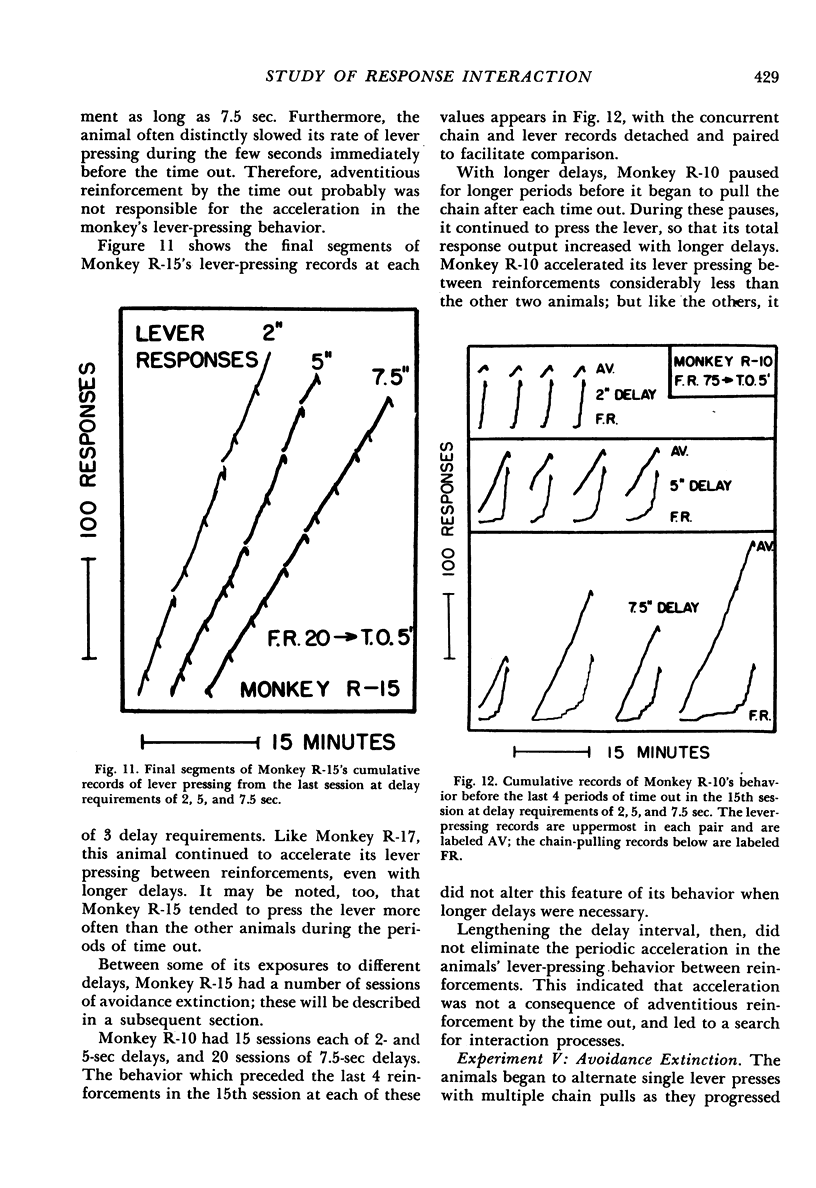
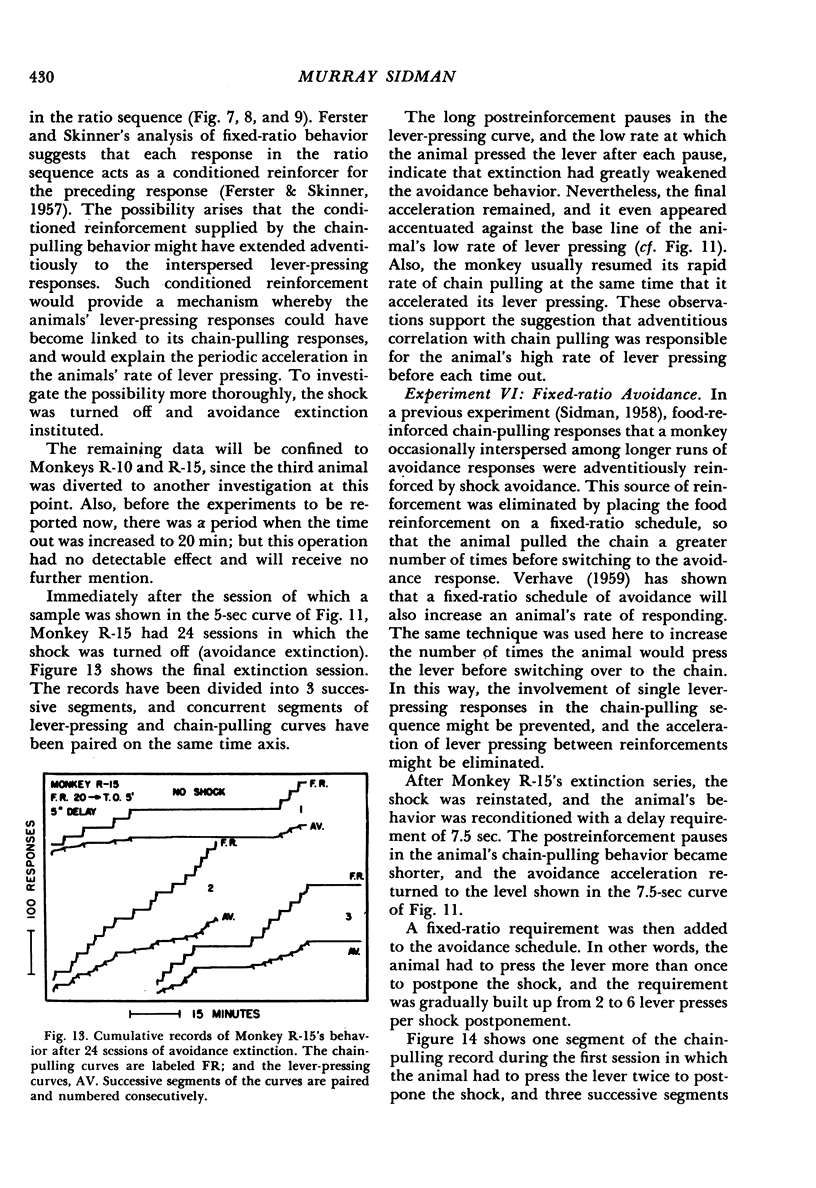
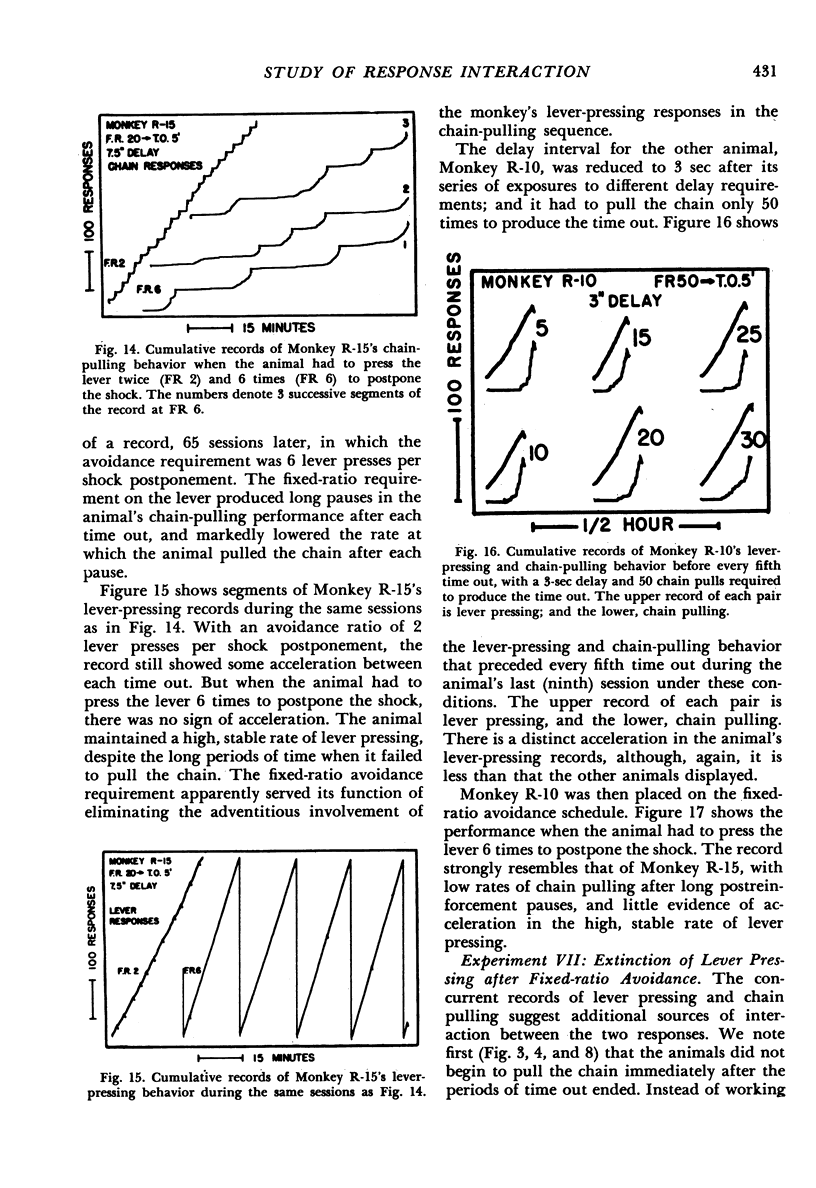
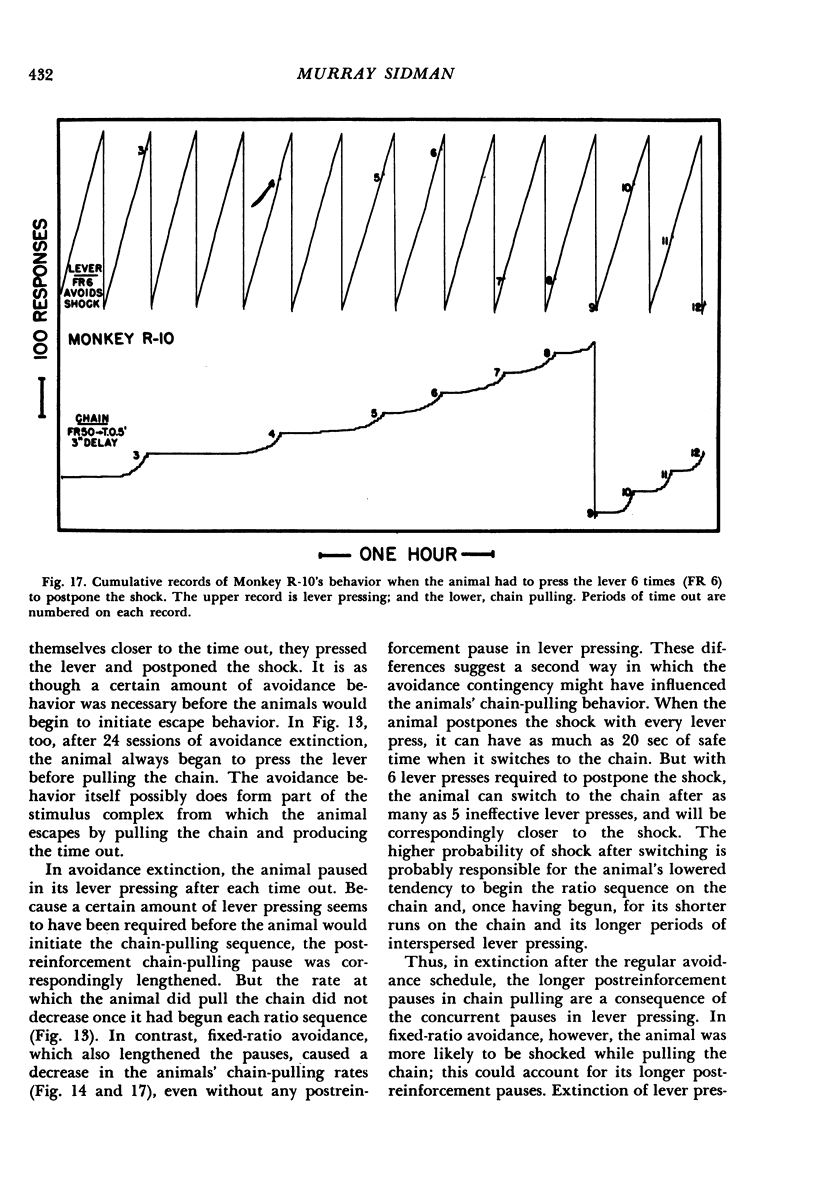
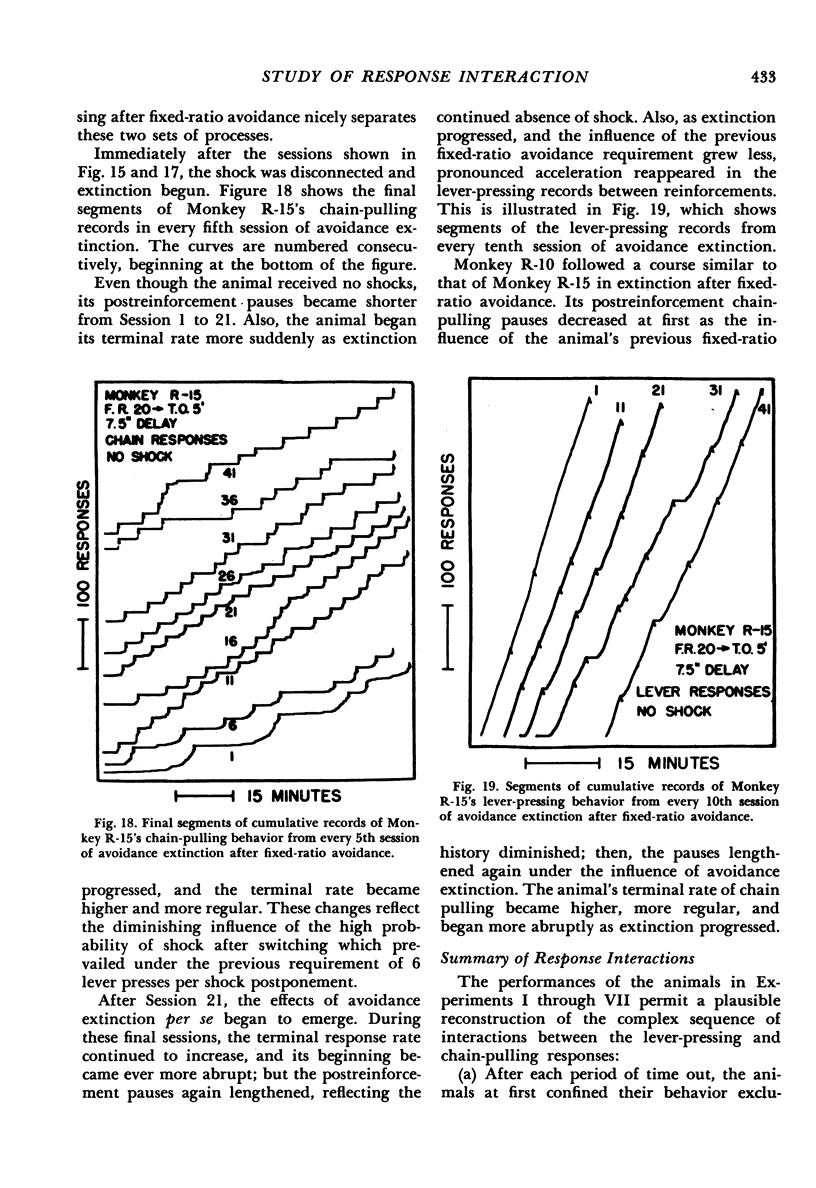
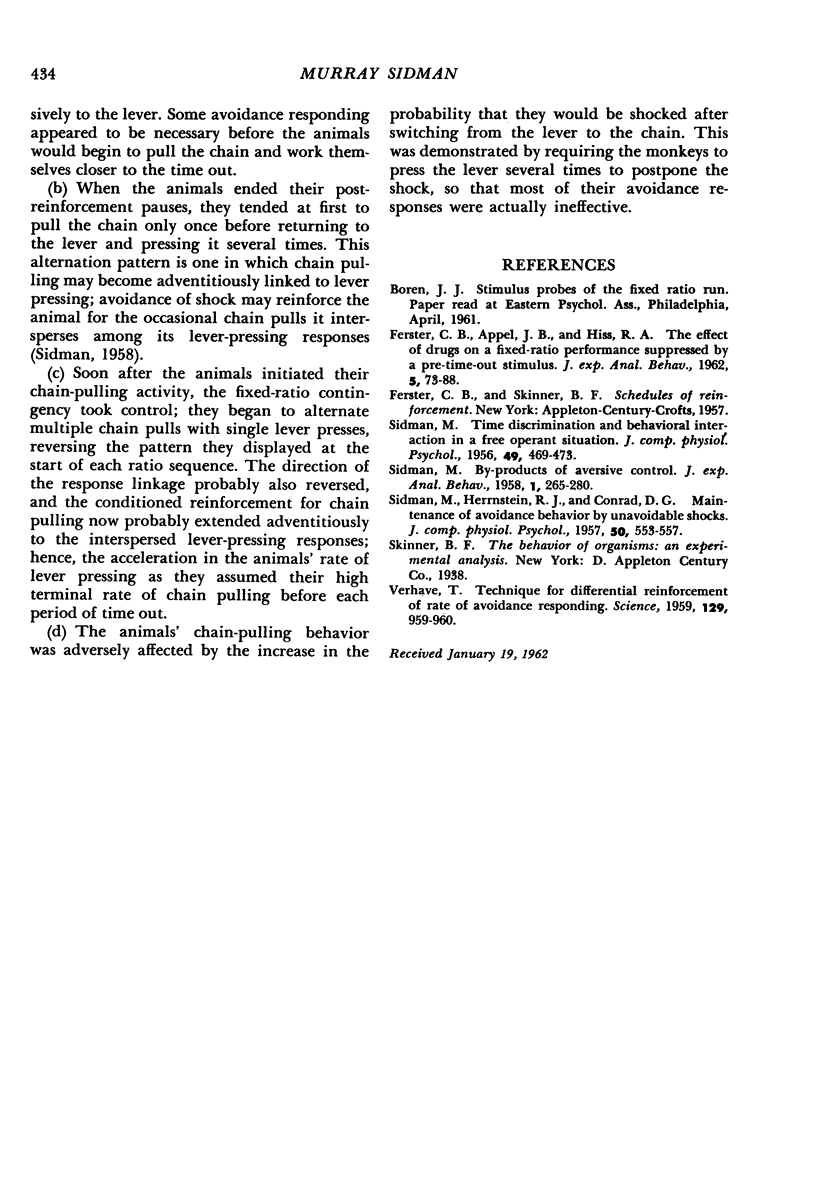
Selected References
These references are in PubMed. This may not be the complete list of references from this article.
- FERSTER C. B., APPEL J. B., HISS R. A. The effect of drugs on a fixed-ratio performance suppressed by a pre-time-out stimulus. J Exp Anal Behav. 1962 Jan;5:73–88. doi: 10.1901/jeab.1962.5-73. [DOI] [PMC free article] [PubMed] [Google Scholar]
- SIDMAN M., HERRNSTEIN R. J., CONRAD D. G. Maintenance of avoidance behavior by unavoidable shocks. J Comp Physiol Psychol. 1957 Dec;50(6):553–557. doi: 10.1037/h0043500. [DOI] [PubMed] [Google Scholar]
- SIDMAN M. Time discrimination and behavioral interaction in a free operant situation. J Comp Physiol Psychol. 1956 Oct;49(5):469–473. doi: 10.1037/h0041892. [DOI] [PubMed] [Google Scholar]
- Sidman M. By-products of aversive control. J Exp Anal Behav. 1958 Aug;1(3):265–280. doi: 10.1901/jeab.1958.1-265. [DOI] [PMC free article] [PubMed] [Google Scholar]
- VERHAVE T. Technique for differential reinforcement of rate of avoidance responding. Science. 1959 Apr 10;129(3354):959–960. doi: 10.1126/science.129.3354.959-a. [DOI] [PubMed] [Google Scholar]


